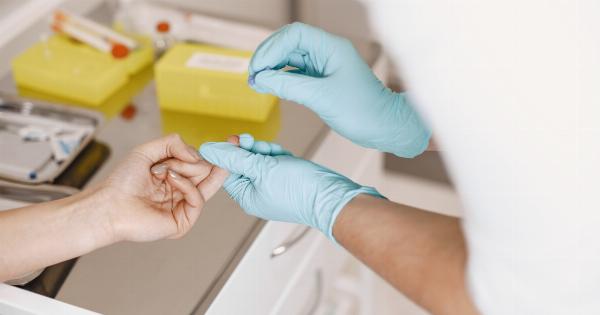Diabetes is a chronic disease that affects millions of people around the world, and it’s important to be aware of the early warning signs so that you can seek treatment as soon as possible.
In this article, we will discuss the symptoms of diabetes that you should look out for, and how to get a proper diagnosis.
What is diabetes?
Diabetes is a condition where your body is unable to properly use and store glucose (sugar), which is a vital source of energy for your body.
When you eat food, your body breaks down the carbohydrates into glucose, which is then used by your cells to produce energy.
If you have diabetes, your body either doesn’t produce enough insulin (a hormone that regulates blood sugar), or your cells don’t respond properly to insulin.
As a result, glucose builds up in your bloodstream, leading to high blood sugar levels and a host of health problems.
Types of diabetes
There are three main types of diabetes:.
- Type 1 diabetes: This is an autoimmune disease where the body’s immune system mistakenly attacks and destroys the cells in the pancreas that produce insulin. This type of diabetes is usually diagnosed in children and young adults.
- Type 2 diabetes: This is the most common type of diabetes, accounting for 90-95% of all cases. It develops when your body doesn’t use insulin properly (insulin resistance), or when your pancreas doesn’t produce enough insulin. This type of diabetes is usually diagnosed in adults, but it’s becoming increasingly common in children and young adults.
- Gestational diabetes: This type of diabetes affects pregnant women, and usually goes away after the baby is born. However, women with gestational diabetes have a higher risk of developing type 2 diabetes later in life.
What are the symptoms of diabetes?
The symptoms of diabetes can vary from person to person, and some people may not experience any symptoms at all. However, the most common symptoms of diabetes include:.
- Frequent urination: If you have diabetes, you may need to urinate more often than usual, and particularly at night.
- Increased thirst: You may feel extremely thirsty, even if you are drinking plenty of fluids.
- Extreme hunger: Despite eating more than usual, you may still feel hungry.
- Unexplained weight loss: If you are losing weight without trying, it could be a sign of diabetes.
- Fatigue: You may feel tired and lethargic, even if you are getting enough sleep.
- Blurred vision: You may experience blurred vision or other vision problems.
- Cuts or sores that heal slowly: This could be a sign of high blood sugar, which can impair your body’s ability to heal.
- Itchy skin: You may experience dry, itchy skin or skin infections.
- Numbness or tingling in your hands or feet: This could be a sign of nerve damage caused by high blood sugar.
- Recurrent infections: Diabetes can weaken your immune system, making you more susceptible to infections.
If you are experiencing any of these symptoms, it’s important to see a doctor as soon as possible.
Early detection and treatment can help prevent serious and potentially life-threatening complications like heart disease, stroke, and kidney failure.
How is diabetes diagnosed?
Diabetes is diagnosed using a blood test to measure your blood sugar levels. There are several types of blood tests that can be used to diagnose diabetes:.
- Fasting plasma glucose (FPG) test: This test measures your blood sugar after fasting for at least 8 hours. If your blood sugar level is between 100-125 mg/dL, you may have prediabetes, and if your blood sugar level is 126 mg/dL or higher, you may have diabetes.
- Oral glucose tolerance test (OGTT): This test measures your blood sugar before and after drinking a sugary drink. If your blood sugar level is between 140-199 mg/dL after 2 hours, you may have prediabetes, and if your blood sugar level is 200 mg/dL or higher, you may have diabetes.
- Hemoglobin A1C test: This test measures your average blood sugar levels over the past 2-3 months. If your A1C level is between 5.7-6.4%, you may have prediabetes, and if your A1C level is 6.5% or higher, you may have diabetes.
Your doctor may also use a combination of these tests, as well as a physical exam and medical history, to diagnose diabetes.
How is diabetes treated?
There is no cure for diabetes, but it can be managed with proper treatment and lifestyle changes. Treatment for diabetes usually involves:.
- Healthy eating: Eating a balanced diet that is rich in whole grains, fruits, vegetables, and lean protein can help regulate your blood sugar levels.
- Physical activity: Regular exercise can help improve insulin sensitivity and lower your blood sugar levels.
- Medication: If diet and exercise aren’t enough to control your blood sugar levels, your doctor may prescribe medications like insulin, metformin, or sulfonylureas to help regulate your blood sugar.
If you have diabetes, it’s important to work closely with your doctor to monitor your blood sugar levels and adjust your treatment plan as needed.
You should also make lifestyle changes like quitting smoking, maintaining a healthy weight, and getting regular check-ups to manage your diabetes and prevent complications.
The bottom line
Diabetes is a serious condition that can lead to a host of health problems if left untreated. If you are experiencing any of the symptoms of diabetes, it’s important to see a doctor as soon as possible to get a proper diagnosis and treatment plan.
Remember that early detection and treatment can help prevent serious complications and give you the best chance for a healthy life.




























